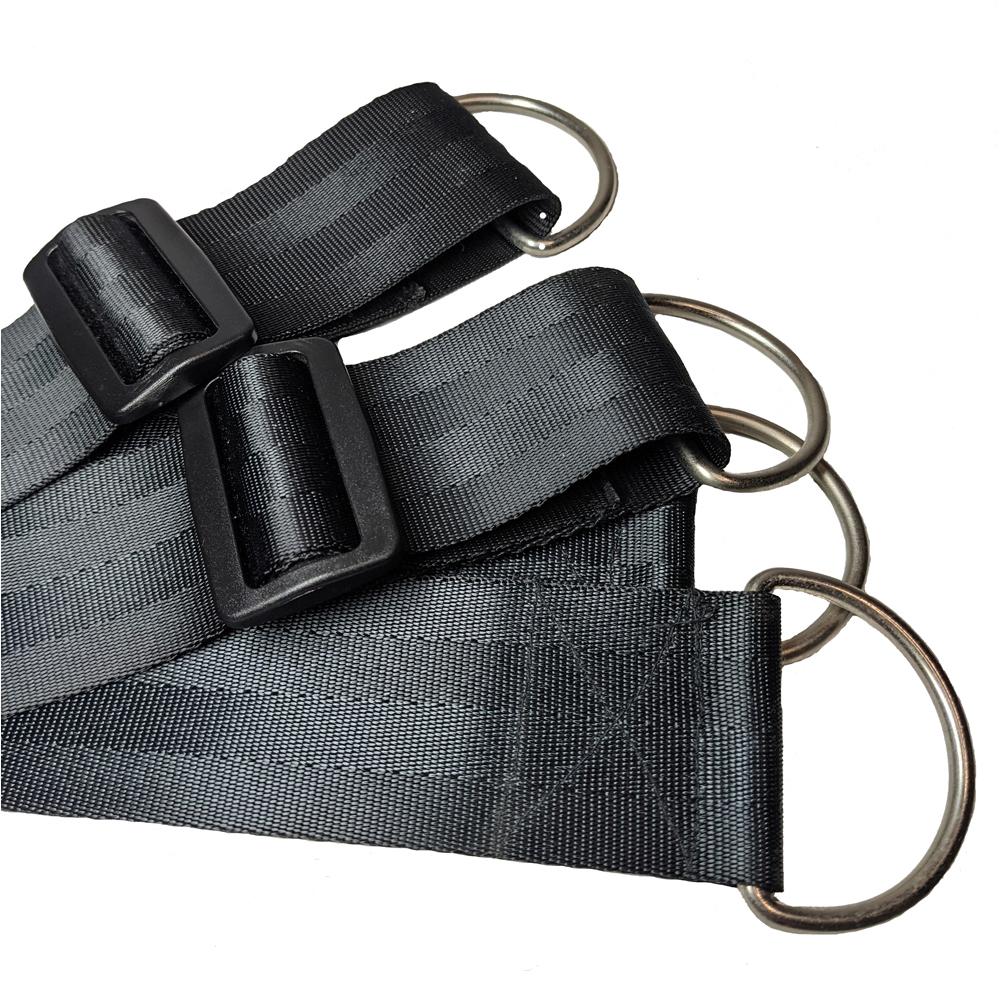Bringing Bondage Into the Bedroom: Different types of Bondage, Consent, and Safety

Bondage is a part of BDSM that focuses on restraint and restriction of movement. Bondage can be psychological; for example, telling someone to hold a position. Bondage can also be physical using rope, handcuffs, bondage tape, saran wrap, and more. Once someone is in bondage, sexual activities might happen or the bondage itself might be the erotic reward.
Bringing bondage into your bedroom requires skill, safety knowledge, and scene planning. Making sure everyone is on the same page of the bondage fantasy is important for safety and sexual satisfaction. Bondage can be a part of an erotic power exchange where you are playing with dominance and submission. It can also be about giving and receiving without a power dynamic. Being tied up or doing the tying doesn’t automatically make you dominant or submissive—you get to create the fantasy you are most turned on by.
What’s hot about bondage?
Bondage doesn’t have to be extreme, intricate, or involve suspensions. Bondage can create a change in the sensations of our bodies through restriction and provide stimulation to our erotic imagination.
You might be turned on by bondage because of:
- Visual constriction of bodies—bondage can be erotic art
- Power and control—bondage can be about dominance and submission
- Meditative—bondage can help bodies relax and let go
- Roleplay—bondage might be part of a specific roleplay, like a kidnapping fantasy
- New sensations—constricting parts of the body can intensify sensations during sex
BONDAGE TOOLS
- Handcuffs
Handcuffs are a popular bondage tool. They're a sexy way to bring fantasies to life as part of a roleplay.
Pros: They are usually inexpensive and not hard to use.
Cons: They are firm, so it’s easy to create discomfort or damage to delicate areas like wrists and ankles. They are dependent on the key, which can get lost. Plan ahead for a safe spot to keep the key and check in actively with your partner’s wrists or ankles for discomfort.
Double Duty Cuffs are a cuff bracelet that transforms into handcuffs that snap together. They are made of leather, they're stylish, and they're softer than metal handcuffs, but very sturdy.
- Bondage restraint systems
Restraint bedsheets or under the bed restraint systems use the bed as an anchor point to restraint wrists and ankles. They are strong, easy to adjust, and tuck conveniently under your mattress so you can pull them out when inspired.
Doorjam cuffs turn your door into a bondage tool. Most door jam cuffs are not for suspension but for restraining someone’s hands over their head. They have a quick release buckle, or velcro, making it easy to get someone out if they want to stop.
- Rope bondage
For rope bondage you’ll need rope and safety scissors. Keeping safety scissors nearby helps you be prepared to quickly release the bound partner if you need to. Satin rope is great for sensual bondage. Cotton rope, included in this Beginner Rope Bondage Kit, is good for bedroom bondage because it’s flexible, soft, and easy to care for.
Jute and hemp rope are natural fibres that work well for Shibari and for people who enjoy the rougher textures of these ropes.
Check out these shopping tips for rope buying.
- Bondage Cuffs
Bondage cuffs are adjustable wrist and ankle restraints that can be connected to each other to restrain limbs, or can be attached to an anchor point like a bed. Bondage cuffs are safer and more comfortable than handcuffs. They're usually made of softer material and are sometimes padded for comfort. The buckles allow for a quick release. You can use bondage connectors to easily link ankles and wrists together. Here are some quality wrist and ankle cuffs:
- Bondage tape
No knots required! Bondage tape doesn’t stick to skin or hair and can be used to restrain ankles and wrists, act as a blindfold, or be wrapped around the mouth as a gag. It’s inexpensive and disposable.
- Psychological bondage
No tools needed! Use commands and obedience to give the feeling of self-restraint. Psychological bondage can be a hot way to start to play with erotic dominance and submission and can be fun for people who don’t enjoy struggling in physical restraints. Grab some bondage erotica to build up your imagination of the kinds of things you can do while someone is purposefully surrendering control of their movement to you.
You can intensify the experience of being restrained with ball gags or blindfolds if your partner finds those sexy.
EMOTIONAL AND PHYSICAL SAFETY
- Learn bondage anatomy
Learn what parts of the body are safe and unsafe to constrict. Learn about minor and major physical risks, like circulation loss or nerve damage. Invest in good bondage education through workshops or books like Better Bondage for Everybody.
- Practice rope safety
Talk with your partner about what your rope bondage fantasy looks like and what activities are on or off the table once one person is in bondage. Keep safety scissors nearby and encourage communication throughout. After all, parts of the body may go numb or get tired, so it’s important to check in.
- Co-create the bondage scene together
Being the top, rigger, or dominant doesn’t mean you have to know and plan everything. Being a submissive or bottom doesn’t mean that you don’t get a say in what the scene will look like before you enter it.
A scene plan is like a menu. Find out:
- What’s hot about this fantasy for each of you? Talk about your fantasies to each other.
- What vibes are you both in the mood for? E.g. fear, power, nurturance
- What intensity are you looking for? E.g. spanking hard or playful?
- How will we know the scene has started/ended? Create a cue or a ritual, like a collar on or off that can help make the beginning and end of a scene clear.
Planning a scene doesn’t steal from spontaneity in the same way having a recipe doesn’t steal from the deliciousness of food. You can mix up the order and intensity of the things you both have agreed to in order to enhance feelings of power and powerlessness.
- Check-in and out every single time
Bring your body and mind into your bondage space by checking in. What worked last weekend might not be what’s working for the body this weekend. Check in about energy, injuries, sore areas, preferences, etc. Checking out helps you reintegrate outside the bondage scene. You might share what you’re feeling, what you’re looking forward to next time, and what might work better next time. Some people like to digest the scene and check-in after a few days and other people like to check-in right after the scene has ended. Talk to your partner to see what they need.
- Create an aftercare plan
What will you both do after bondage is over? You might require physical and/or emotional aftercare. Some people enjoy massages after bondage is over to help recirculate blood flow and enjoy the sensations post-bondage. Your aftercare plan might include things like: cuddles, massages, sharing food, or debriefing the fun.
Hopefully this is a helpful guide, and remember to take it slow, always communicate, and have fun!Written for GFH by Luna Matatas


